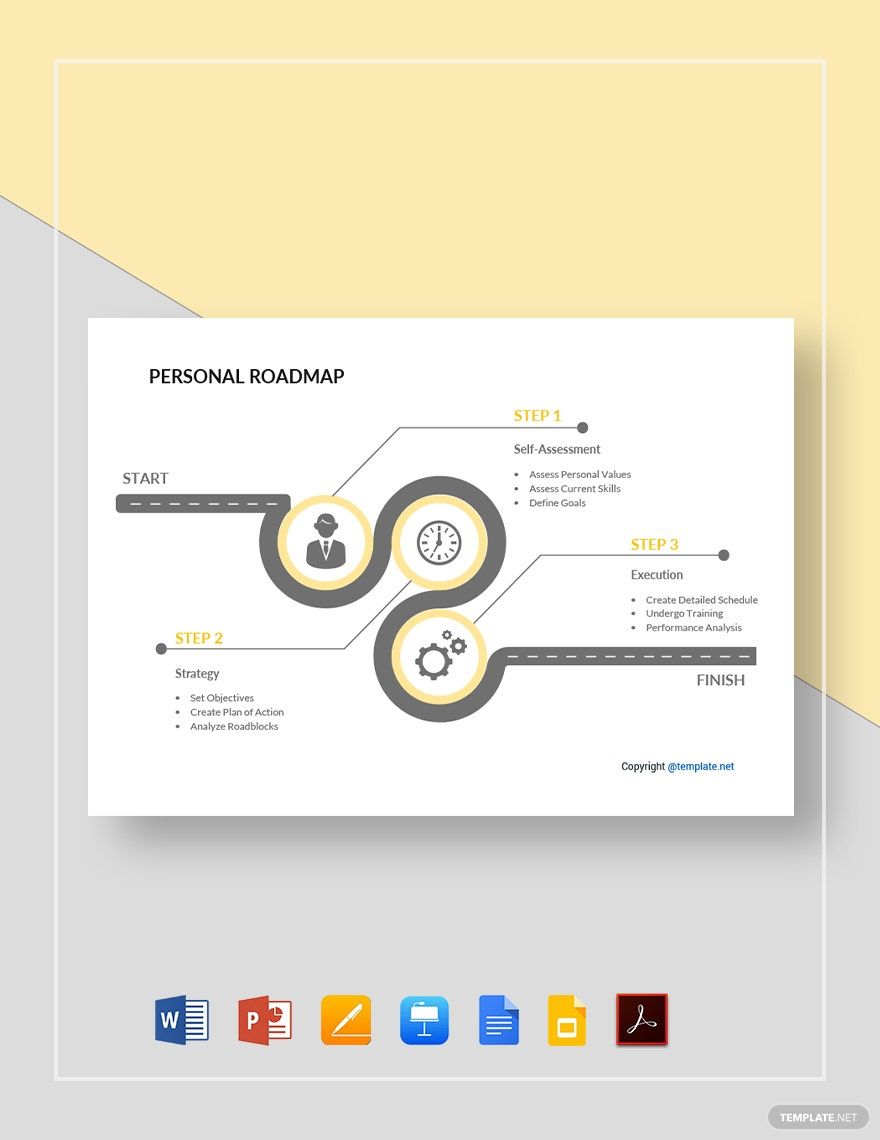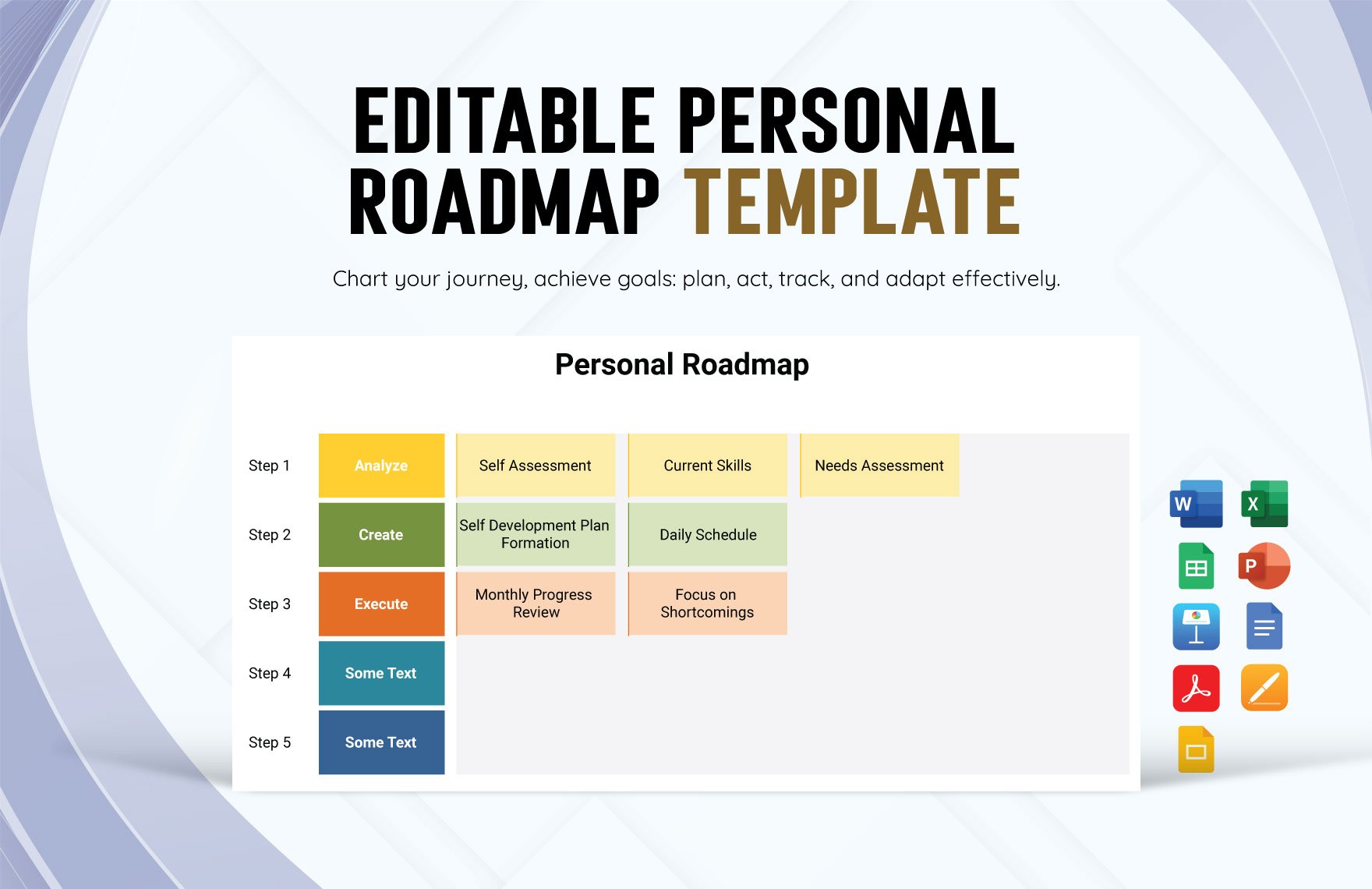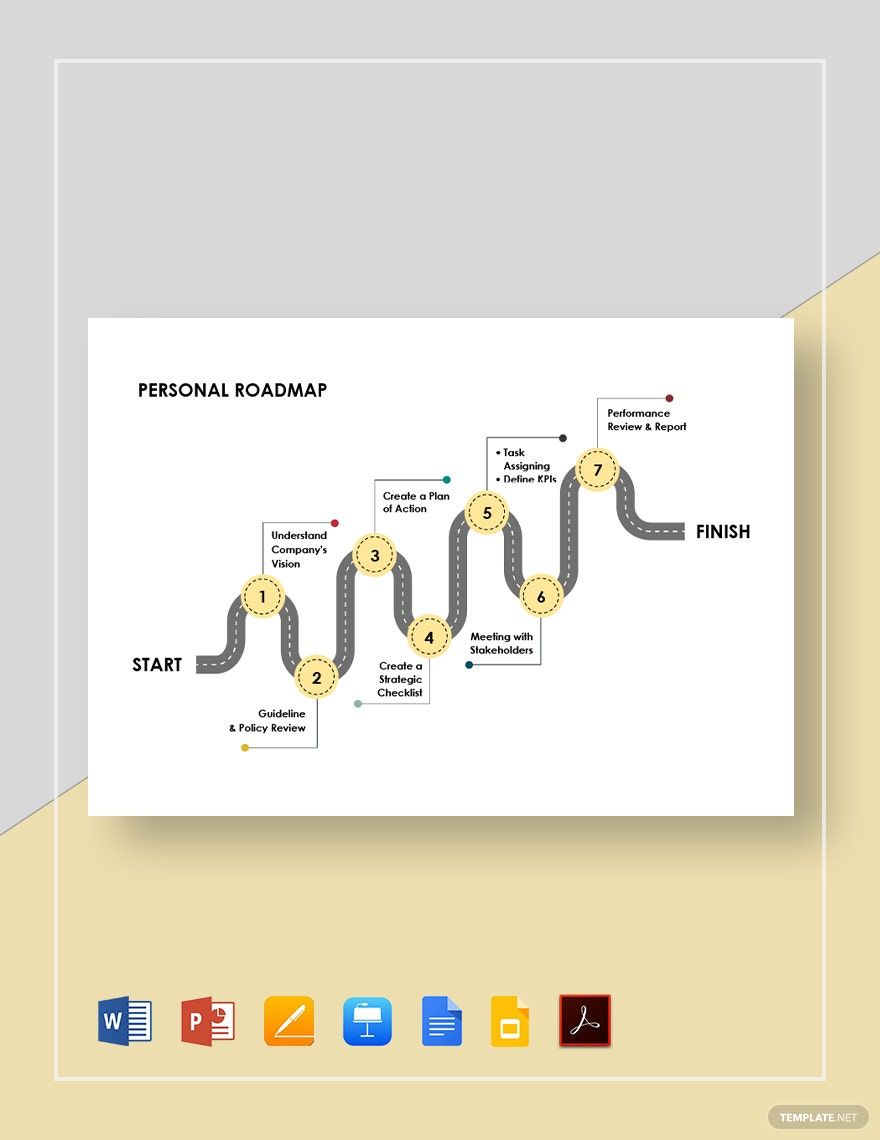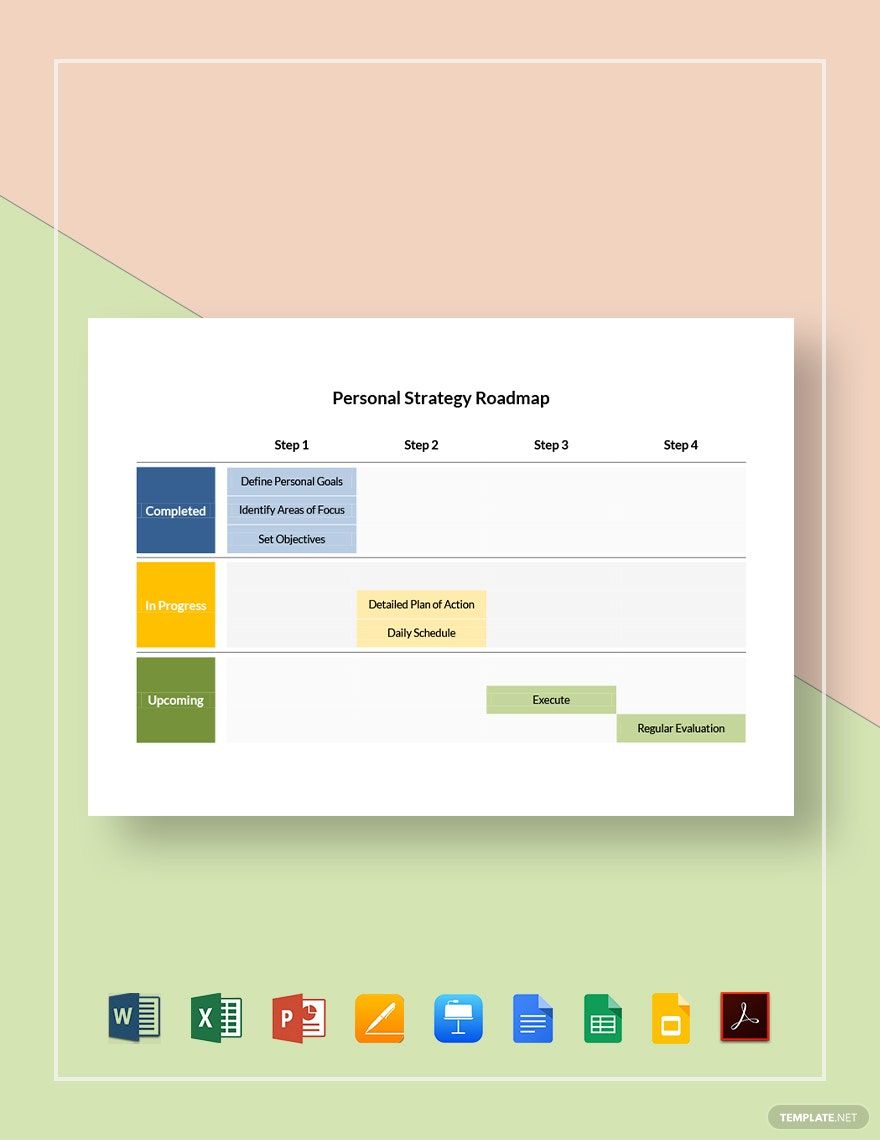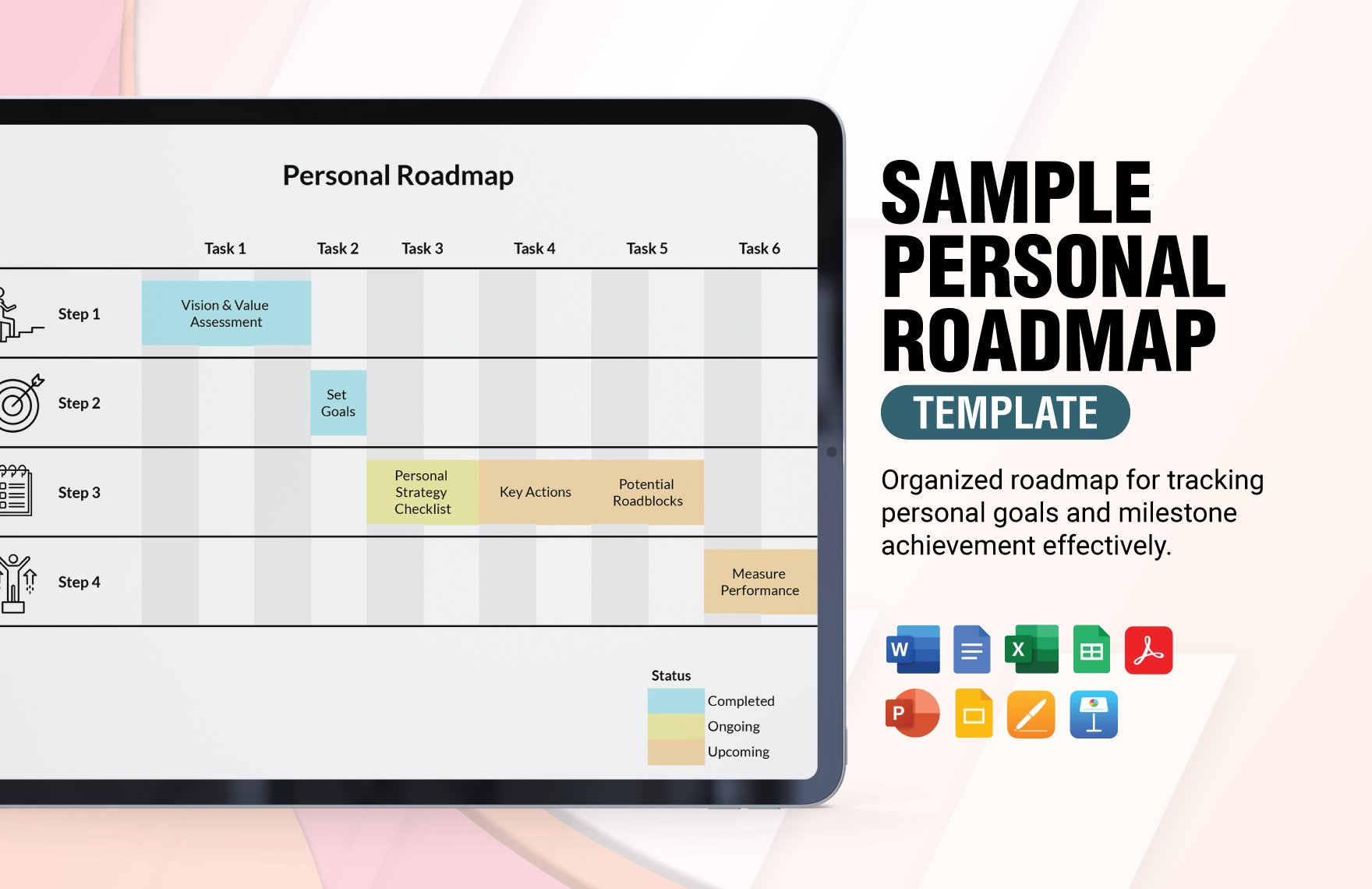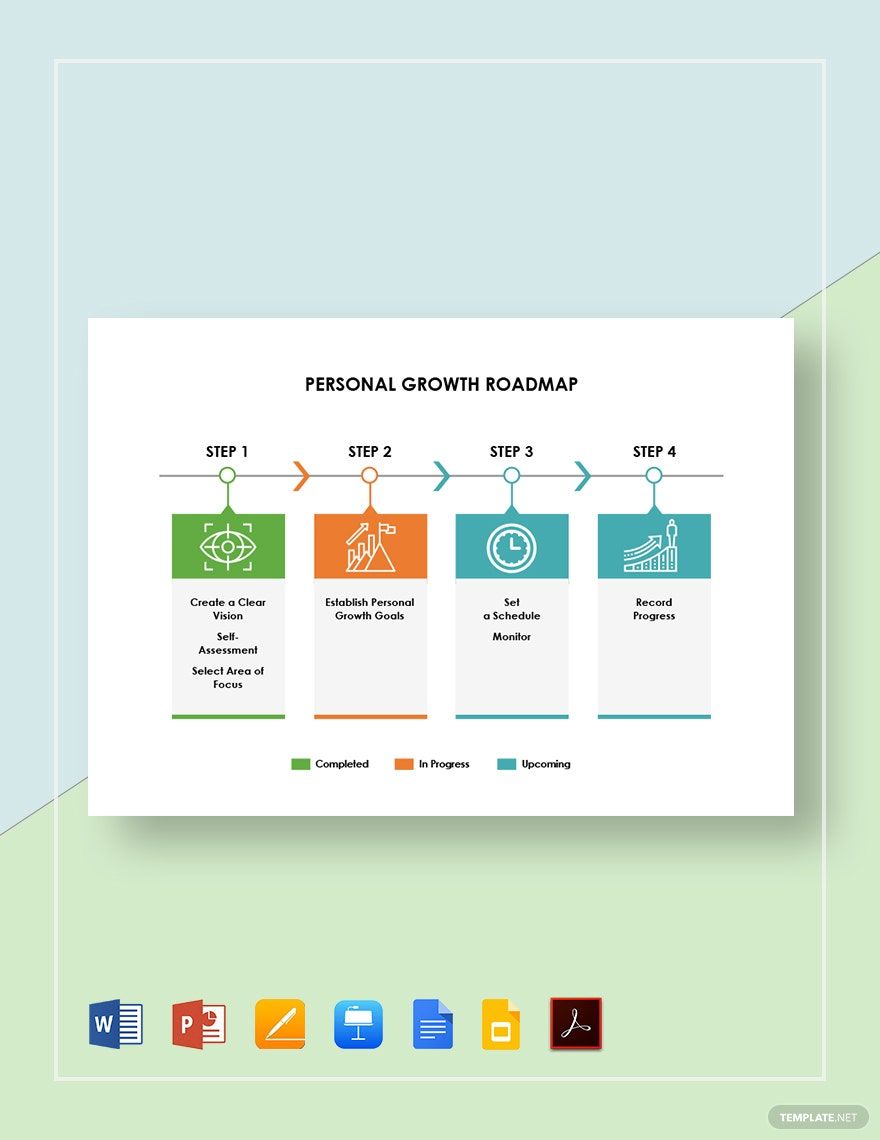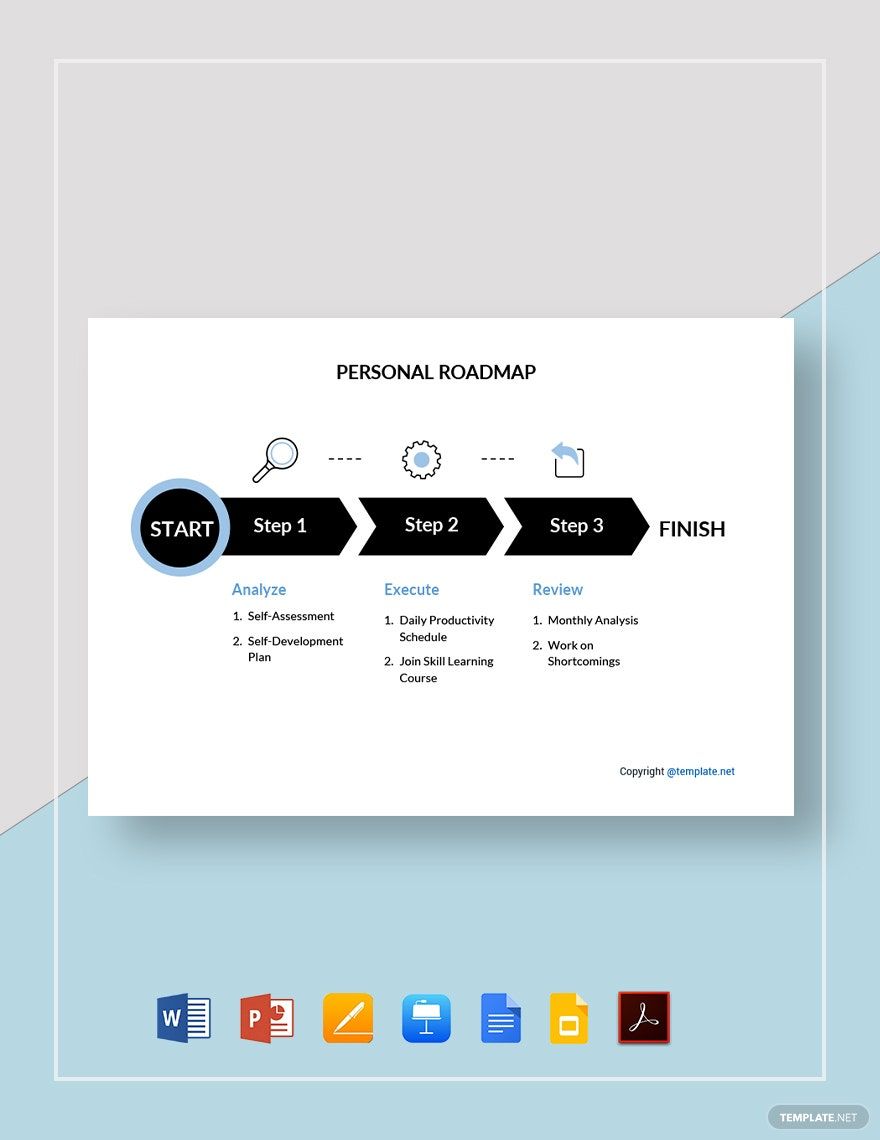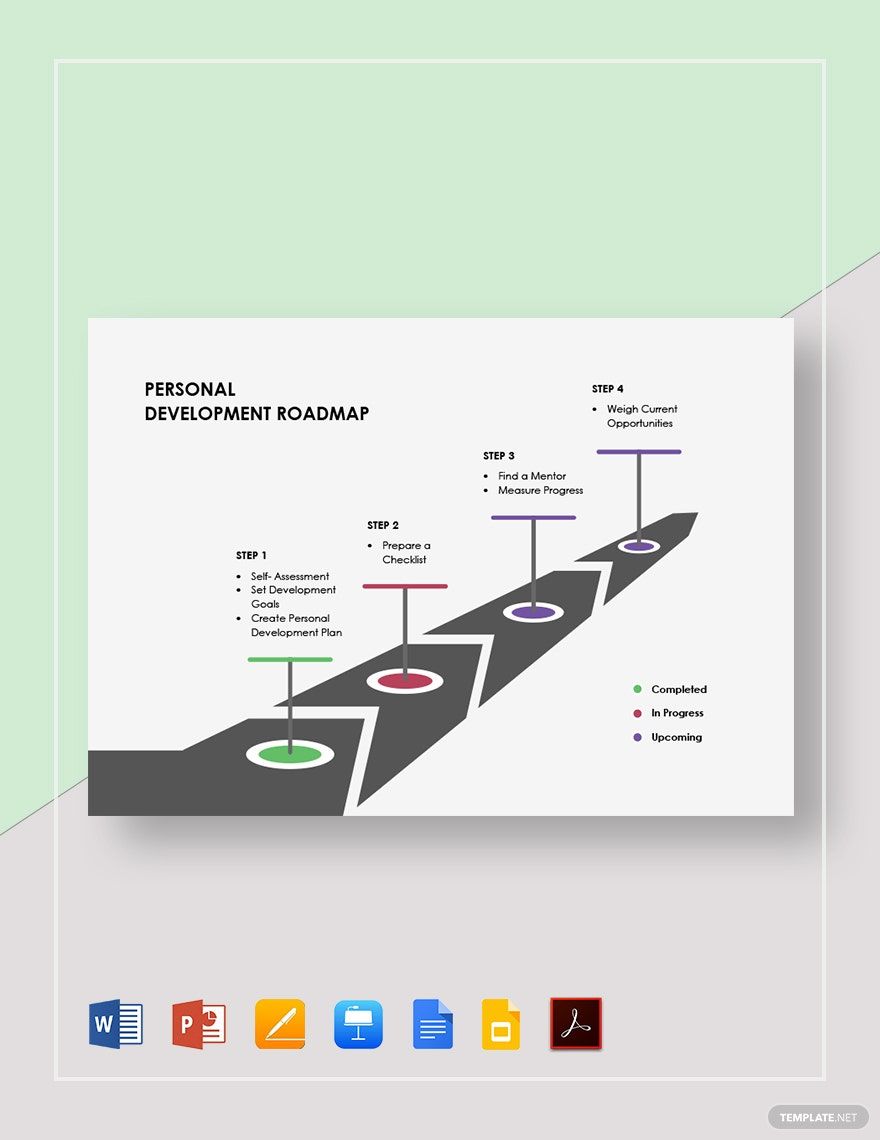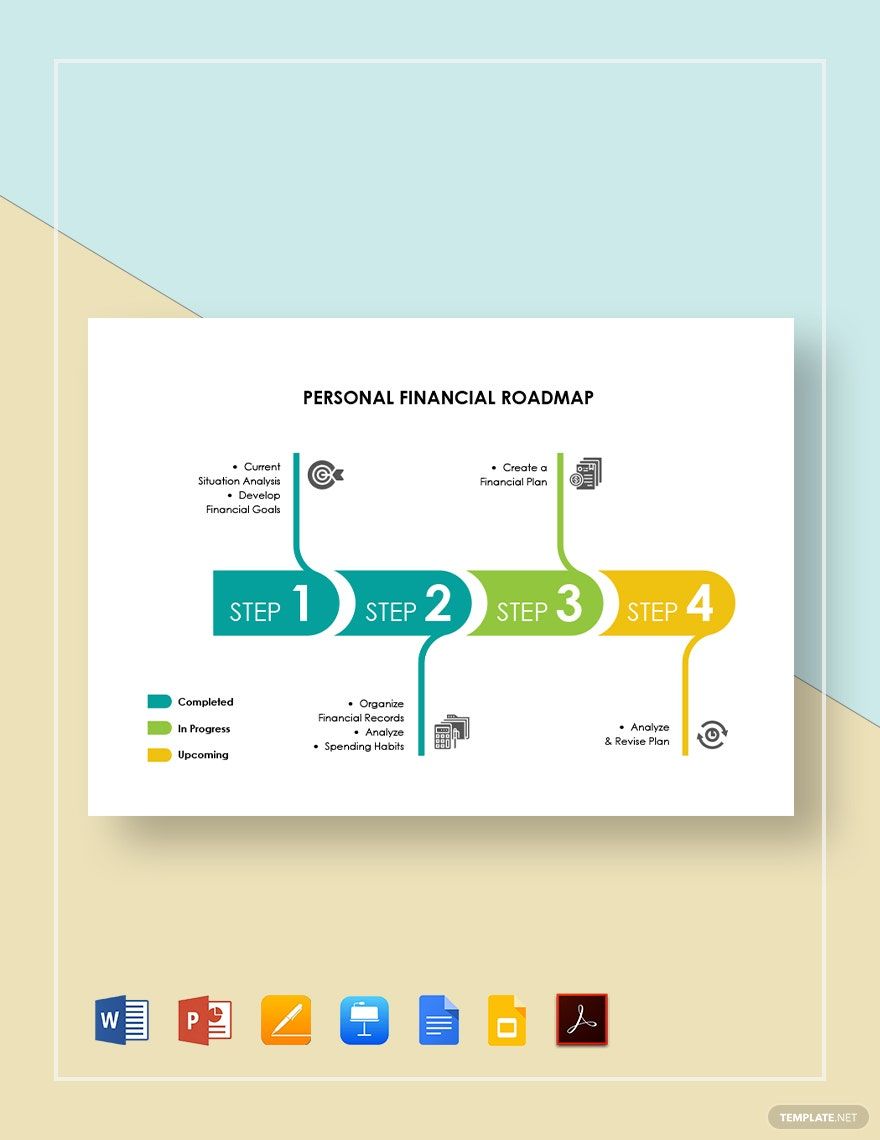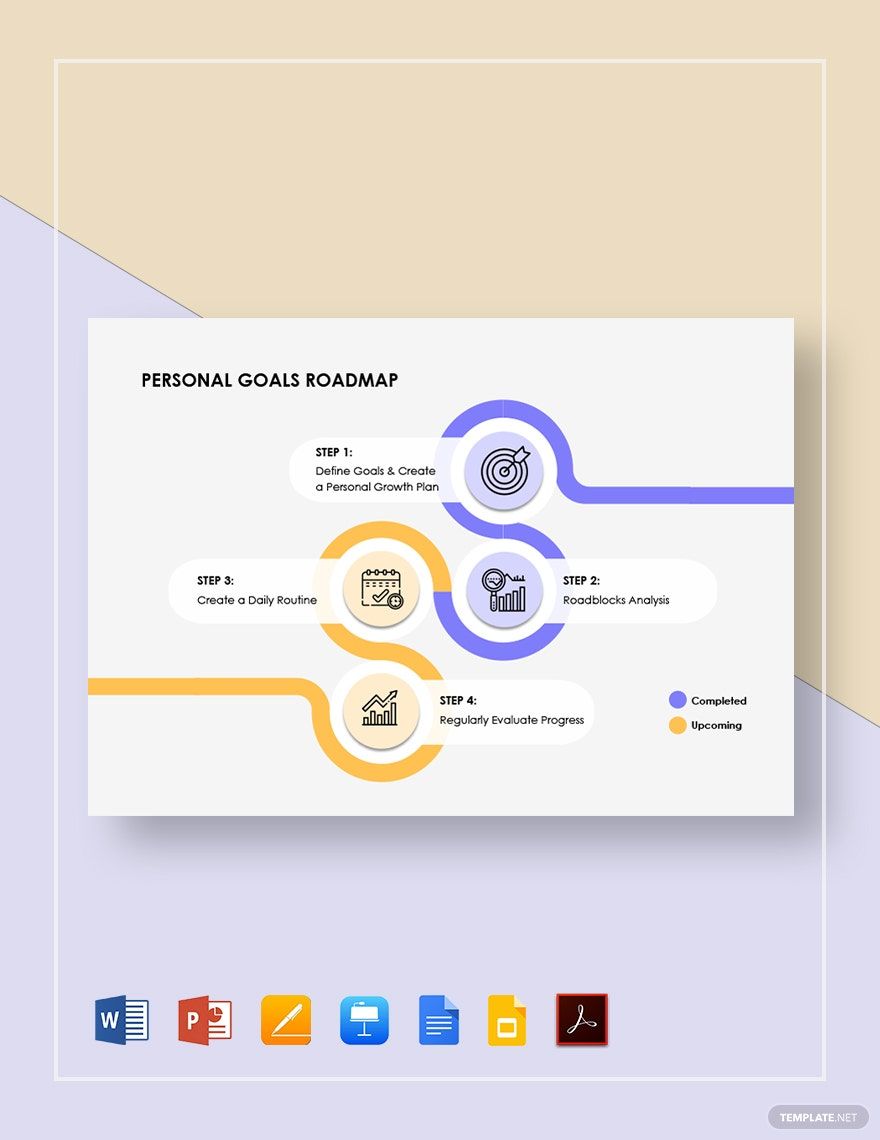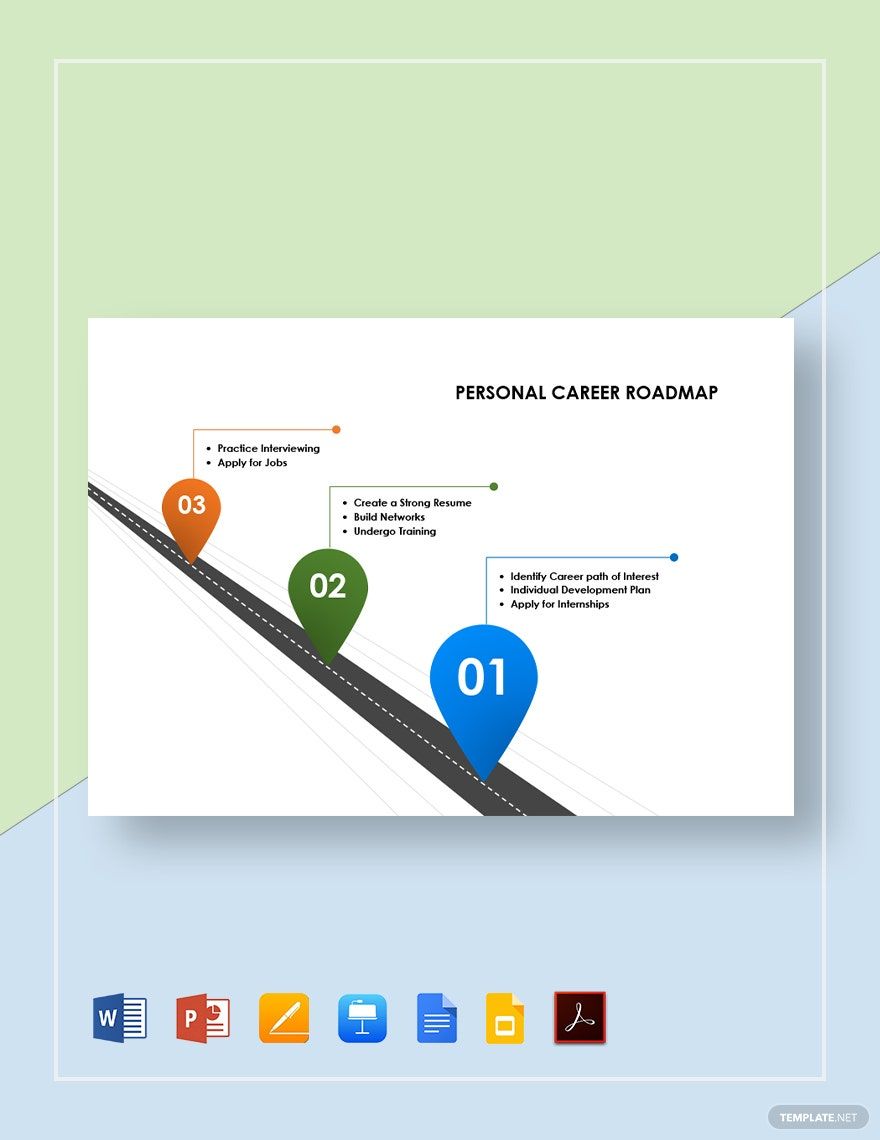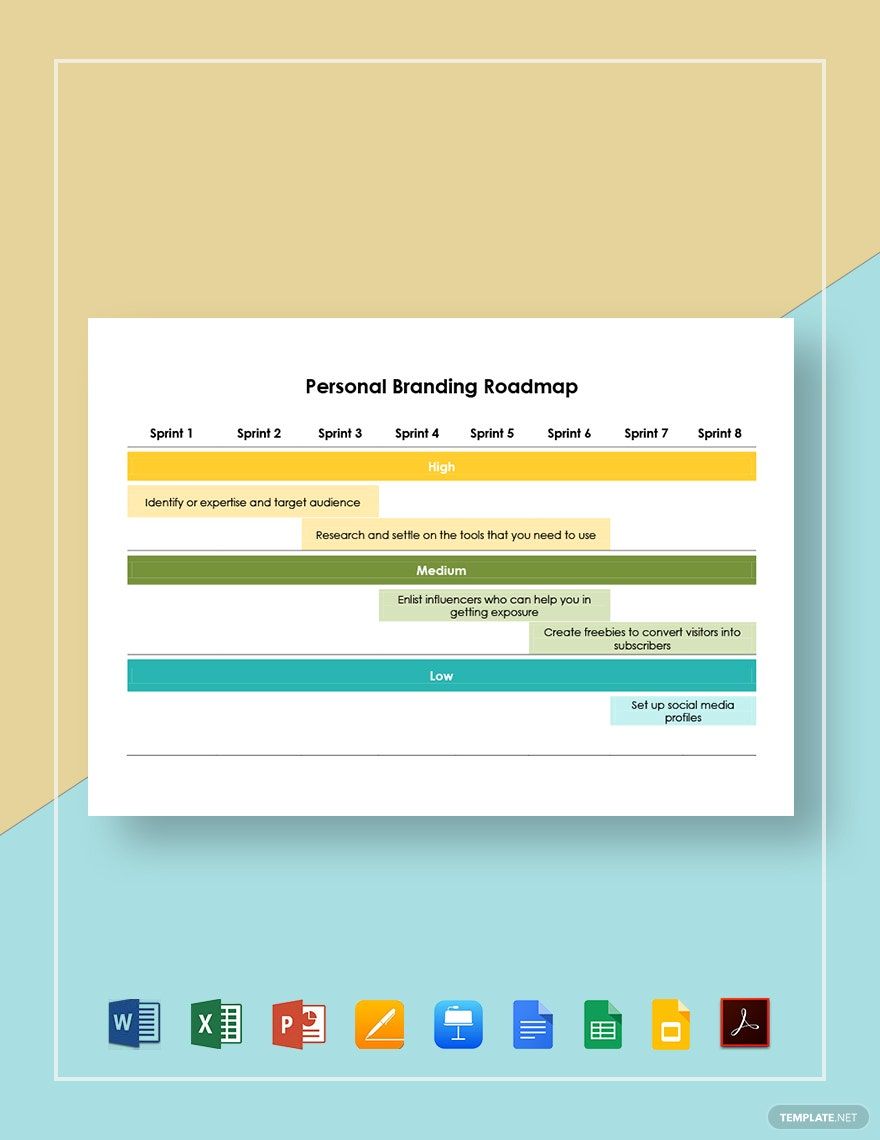When people begin to value their personal growth, they tend to create goals. Such goals may include education, career growth, or even personal finances. However, merely setting your goals is not enough—you need to make it visible. And for that, you need a personal roadmap, and you can create one using any of our Personal Roadmap Templates in MS Word format. Any of these templates will not only help you grow the way you want to be, but it will also ensure that you will commit to it no matter what. Start creating your personal roadmap and pave the way to your success today!
Personal Roadmap Templates in Word
Explore professionally designed editable personal roadmap templates in Word. Free, customizable, and printable for professional results. Download now!

Get Access to All Roadmap Templates

- Ticket
- Quotation
- Receipt
- Recipe Card
- Proposal
- Contract
- Statement
- Newsletter
- Coupon
- Bill of Sale
- Agreement
- Affidavit
- Memo
- White Paper
- Itinerary
- Email Signature
- Postcard
- Plan
- Planner
- Program
- Note
- Cover Page
- ID Card
- Banner
- Form
- Envelope
- CV
- Ebook
- Manual
- Notice
- Magazine
- Thesis
- Bookmark
- Lesson Plan
- APA
- Job Description
- Cover Letter
- Sign In Sign Out
- Poster
- Chart
- List
- Time Sheet
- To-Do List
- Log
- Assessment
- Teacher
- Business
- HR
- Marketing
- Sale
- Advertising
- Finance
- Accounting
- Legal
- Administration
- Operations
- Health Safety
- Bookkeeping
How to Create a Personal Roadmap in MS Word
A personal roadmap serves as the literal map that will guide you in your journey to self-growth. But if this is your first time creating one, you would also need a guide for that. You can now learn how to build your personal roadmap to success following any of our tips below.
1. Know and Write Down Your Goals
Like any personal development, learning development, or career development endeavors, everything starts with knowing your goals. Goals are the main meat of any personal roadmaps and are often found at the topmost part. Writing these down into your roadmap is also a crucial factor. A Harvard Business Study reveals that when 3% of its MBA graduates wrote their goals down, they achieved tenfold. Forgetting to write it down will get you tenfold's worth of regret and disappointment.
2. Make Your Goals SMART
Your roadmap will be easier to follow through if your goals are broken down into manageable chunks and are specific, measurable, attainable, realistic, and time-bound or SMART. Keep in mind that your goals are the main essence of your personal roadmap, so you need to master the steps on how to ensure that the goals you will input on your roadmap are indeed SMART.
3. Factor in Potential Obstacles
Even if you come up with well-defined goals, it will be pointless if you do not acknowledge the fact that there will always be roadblocks in your journey. That is why, as early as preparing your personal roadmap, it is essential that you also consider all the possible challenges that you might face. By doing so, you can also create future action or contingency plans that will mitigate or even eliminate whatever these obstacles are.
4. Set Milestones and Keep Track of Your Progress
Milestones are checkpoints that will help you identify the target dates of when you should complete certain activities. Milestones help you to monitor all the deadlines and target dates you set for yourself. With milestones set, it will be easier for you to track your progress. Tracking your progress is essential so you will know how far you have come and how far you still need to go.
Frequently Asked Questions
How to Make Your Goals SMART?
For instance, you want to achieve skill development as a versatile artist.
- Specific: Choose one skill to focus on, and that could be a skill in drawing nonliving objects through digital means.
- Measurable: Draw 90 objects.
- Attainable: Aim to learn and draw three objects every day.
- Relevant: Draw these objects strictly using a digital medium. Do not draw an object through traditional means and edit it to make it look like you drew it digitally.
- Time-bound: Learn how to draw 90 objects within 30 days.
What Are the Basic Elements of a Roadmap?
- Goals
- Objectives
- Steps
- Milestones
- Roadblocks
What Is Not a Roadmap?
- A roadmap is not a backlog.
- A roadmap is not a tracker used for project management.
- A roadmap is not a document that lists features.
What Is a Roadmap?
- A roadmap is a high-level strategic plan that contains goals, objectives, steps, and milestones of a team or an individual.
- A roadmap is a communication tool that encourages analytical thinking behind the purpose of the defined goals, objectives, steps, and milestones.
When Do You Need a Personal Roadmap?
If you are tired of making the same new year's resolution from five years ago and if you want to ensure that your future self will be thankful toward your present one, then go ahead and create your roadmap.
